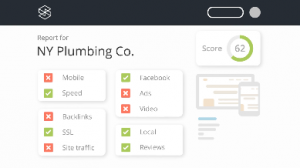
The competitive recruiting market has spurred the onset of a technology revolution in the talent acquisition industry, which small, mid-size, and large businesses have embraced. The abundance of data provided by this technology is giving HR teams more power than ever before to make informed decisions when it comes to job recruitment and talent acquisition.
How to Use Hiring Analytics to Measure Your Hiring Process
While there is no one-size-fits-all solution in terms of measuring the effectiveness of your hiring process, a good place to start are these seven metrics. Based on your company’s unique needs and strategies, you may want to develop a suite of hiring tools and data that measure both the effectiveness and the efficiency of your talent selection process. Some examples of common efficiency metrics include recruiter workload, time-to-fill ratio, and time to source. Common effectiveness metrics include cost per hire, source of hire, and quality of hire.
When utilized to their full potential, hiring metrics can provide invaluable employment lifecycle intelligence and quantify your hiring. Here’s how.
1. Use Hiring Analytics to Identify Productive Sources
The first step to attracting top talent is to know where to find it, such as on job boards, social media sites, mobile hiring apps, or through referrals. Tracking and analyzing source of hire data can help you determine where the majority of your candidates are entering the recruiting process. You also can analyze the source of your leading applicants, which will indicate where you are more likely to find top talent candidates in the future. This will help your HR department determine where to put their resources to ensure that greatest return on investment.
2. Determine Overall Internal Satisfaction
The effectiveness of your organization’s recruiting process may look completely different to the HR department than it does to your leadership, or even your hiring manager. It is important that all key players assess the success of any talent acquisition campaign. Electronic surveys can provide valuable data and help to identify problems with the recruiting process. The involvement of key stakeholders in the assessment of the hiring process also can ensure that hiring managers have a full understanding of the functions and capabilities of the recruitment technology used.
3. Review Overall External Satisfaction
Candidates that have a positive recruiting and onboarding experience are more likely to accept a position and to remain with the company. This makes it crucial to track the quality of your company’s candidate experience – or each candidate’s overall satisfaction of the recruiting process. Standardized, electronic surveys can provide you with all the analytical data you need to identify any problems within the hiring process from the candidate perspective.
4. Time-to-Fill Analysis
While you don’t want to rush the hiring process, it is important to evaluate the time it takes to fill specific positions. The Society of Human Resource Management defines time-to-fill as “the number of days from when the job requisition was opened until the offer was accepted by the candidate.” High time-to-fill timelines may signify a problem within the recruiting process. These metrics can help hiring managers plan their workload better, by knowing when to expect the position to be filled.
5. Analyze Valuable Recruiting Ratios
Data collected during each stage of talent acquisition can provide an in-depth look into your hiring process. Recruiting ratios, such as the number of applicants compared to the number of interviews or the number of interviews compared to the number of job offers, can help you determine the overall effectiveness of the acquisition process at every stage. In addition, these data can help you track the amount of resources used at each stage of the hiring process.
6. Total Cost Per Hire
Another set of hiring metrics that should be tracked is the total cost per hire. You want to know exactly how much money the company is spending on each hire they bring onboard. This includes costs such as agency fees, advertising costs, internal recruiting costs, assessment tools, hours spent at each stage of the recruiting process, travel expenses, and relocation. As you make changes to the recruiting process, you can compare these metrics to evaluate efficiency and return on investment.
7. Quality of Each Hire
Tracking these hiring metrics should not stop once the candidate is hired. In fact, you can gain valuable insight as to the quality of each hire by continuing to track their success, especially throughout the first year. You can track attendance records, new hire turnover rates, managerial reviews, and productivity. You also can use post-hire assessments to determine the quality of each hire, identify leadership skills, and to make promotional decisions.
8. Early Stage Attrition Rate
Though a candidate may be skilled and provide value even during a short tenure, leaving the job (whether voluntarily or involuntarily) shortly after being hired hardly constitutes as a success. One way to calculate your new hire turnover rate is to divide the number of employees who separate from the company by the total number of employees working during that time period. You can make these calculations based on a 90-day window or other milestones, such as six months or a year.
Using Hiring Metrics to Make Intelligent Talent Decisions
Utilizing data from recruiting metrics and performance is not just about finding high-potential candidates; it’s also about using these metrics to tell the story of your company, your candidates, and your hiring procedures so you can enhance your current talent acquisition process.
The results of strengthening this process include improving the quality of hire, reducing recruitment costs, shortening the time-to-fill timeline, and increasing employee retention.
Business & Finance Articles on Business 2 Community
(183)
Report Post





